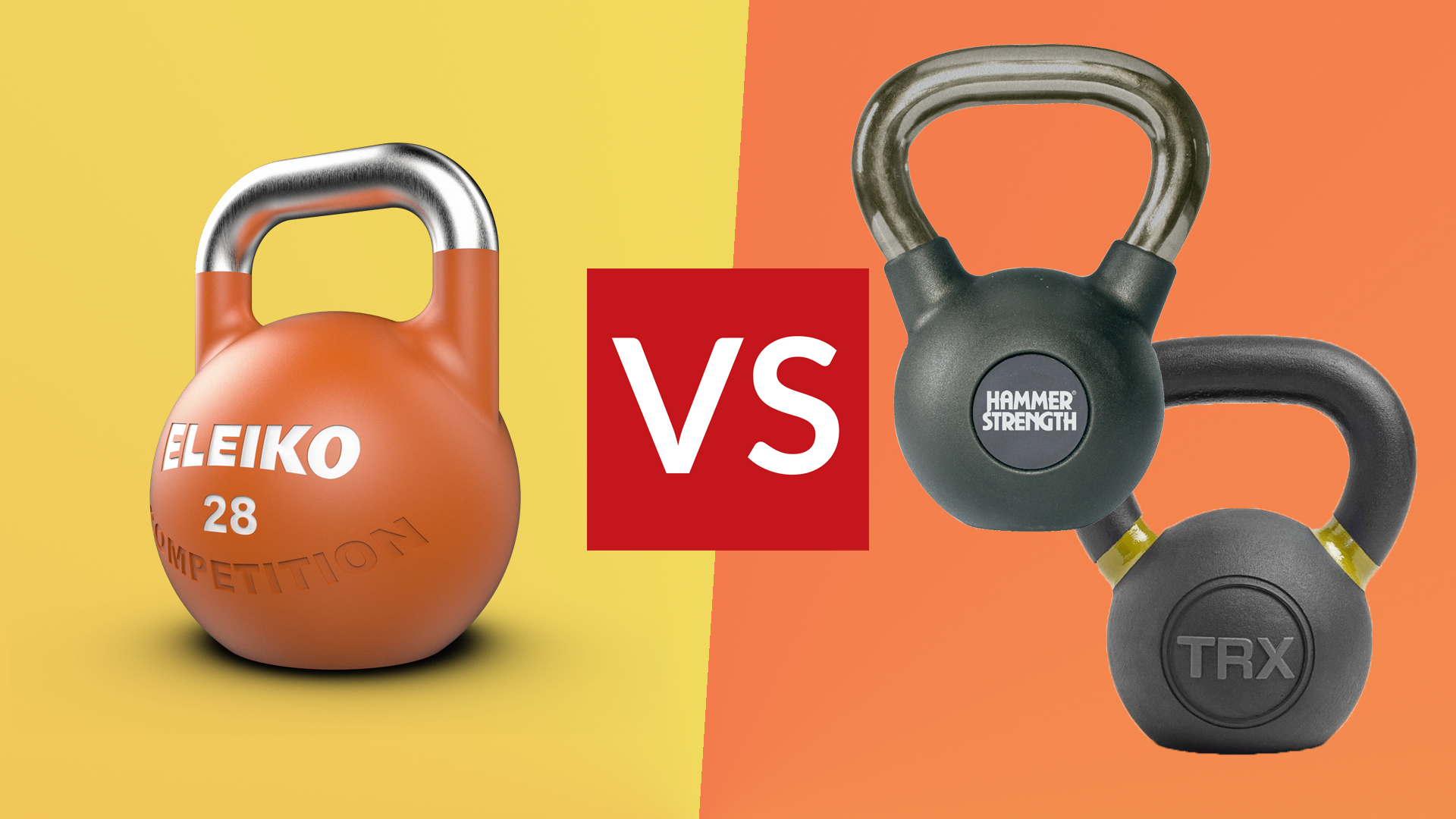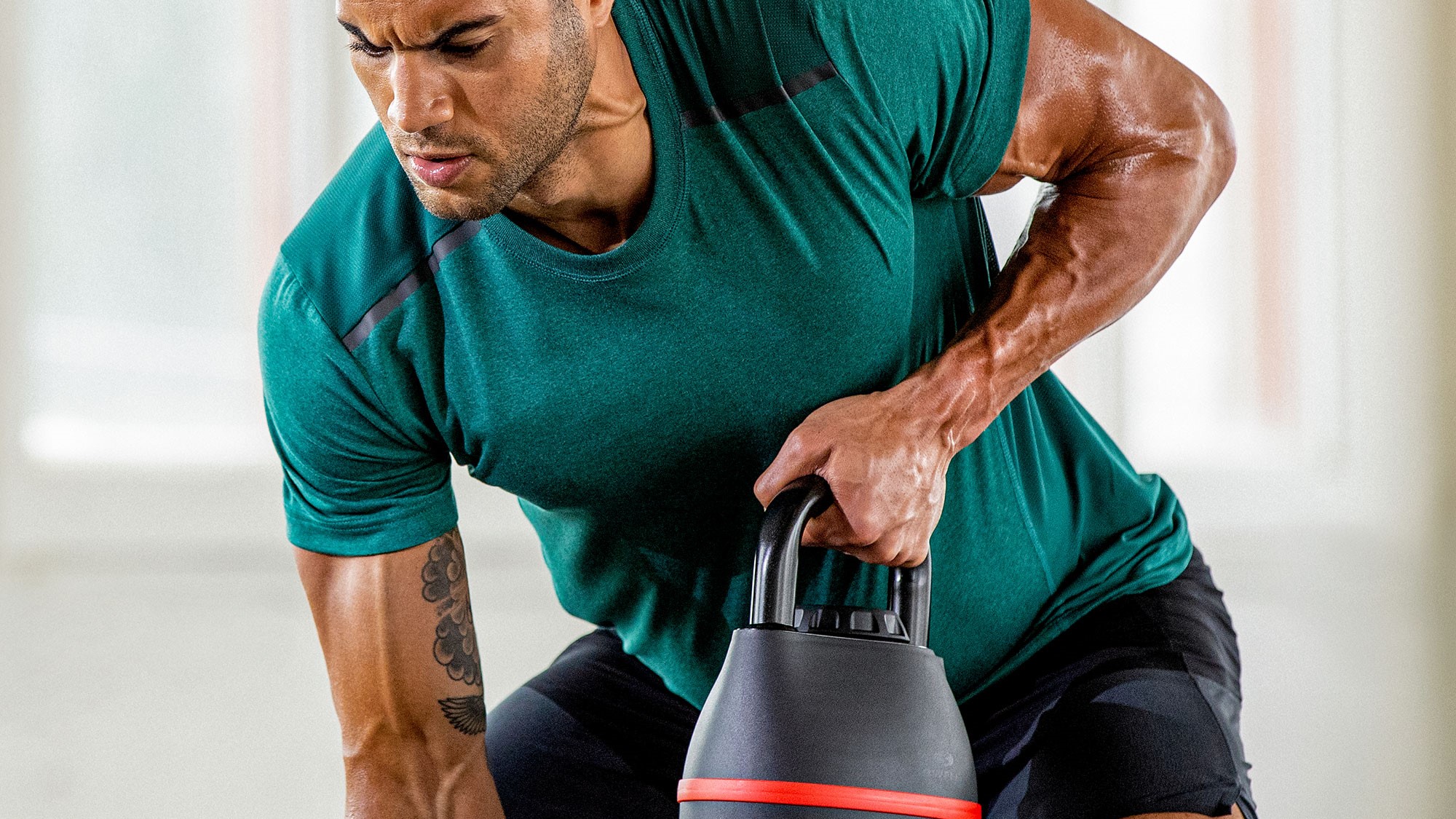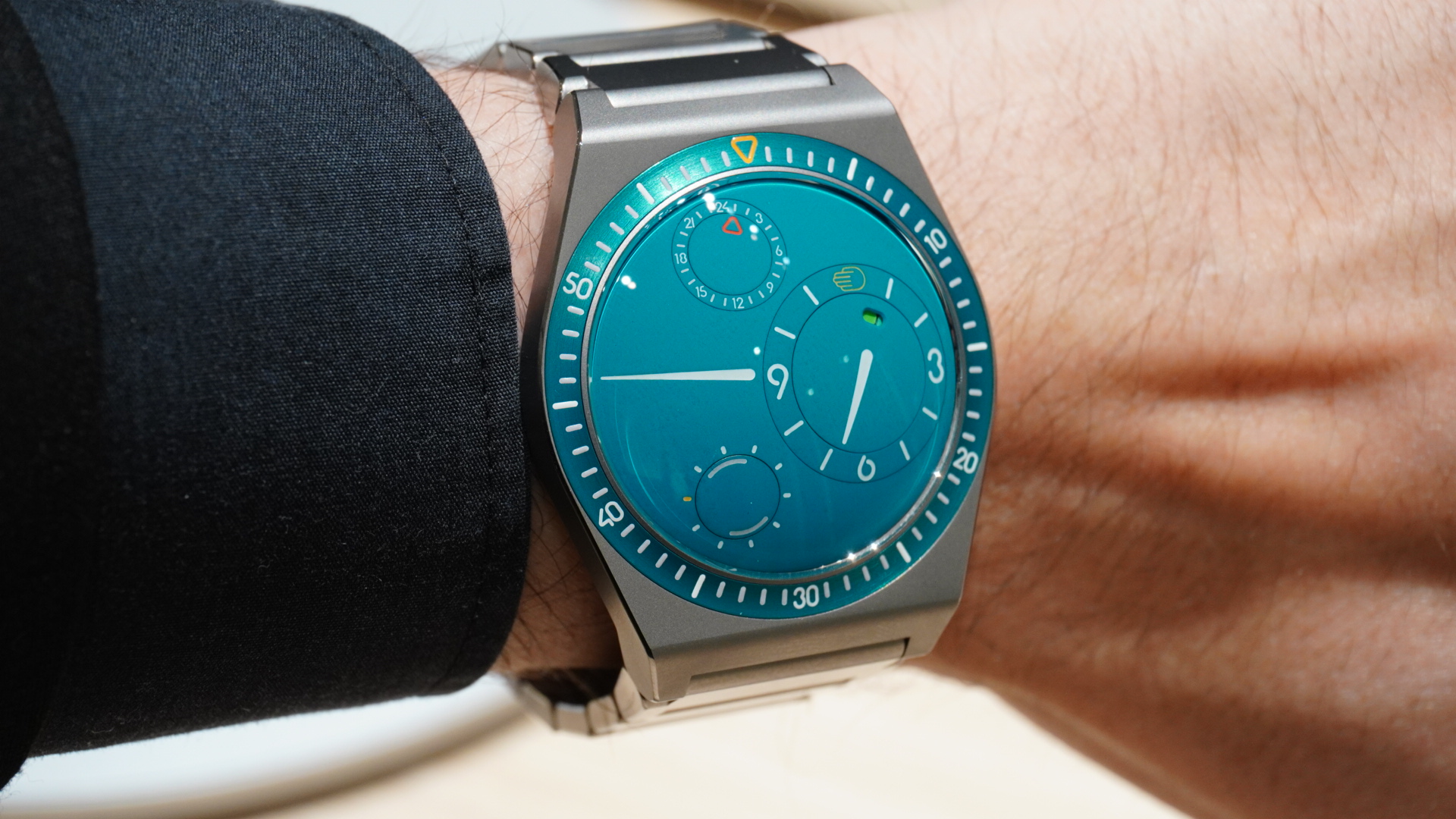

You might have seen competition kettlebells before and thought they looked pretty cool with their uniform shape and bright coloured bodies. Your next thought might have been, ‘what’s the difference between competition and training kettlebells’ if that was the case, you’re asking the right questions; well done. There are indeed a few key differences between competition vs training kettlebells, and you’d better know them before you spend a fortune on the best kettlebells.
Competition vs training kettlebell: What are competition kettlebells?
Not surprisingly, competition kettlebells are used for competitions, and they must adhere to certain standards, so the results from these competitions are comparable to each other. There are two main sports competitions kettlebells are used for kettlebell sport lifting and CrossFit.
The former is probably a little less known than the latter, and it involves repeatedly lifting the kettlebell for a certain period of time: pretty simple stuff. Much like the kettlebell itself, kettlebell sport lifting originates from Russia and “developed as an organised, standard sport under the name kettlebell lifting during the 1960s”, according to Wikipedia.
CrossFit doesn’t need much introduction in 2021, being one of the most dynamically growing sports in the world. Crossfit athletes work extensively with kettlebells, and a lot of people associate kettlebell training with Crossfit (wrongly). Some CrossFit favourite kettlebell exercises include kettlebell jerks, kettlebell swings etc.
Needless to say, competition kettlebells can be used for other types of competition too.
Competition vs training kettlebell: Price and availability
Kettlebells have seen a huge surge in popularity in 2020 thanks to the lockdown and were sold out almost everywhere. Nowadays, it’s a bit easier to buy kettlebells, but stocks are still low at most retailers, so if you see a good kettlebell deal, we recommend making that buying decision sooner rather than later.
Competition kettlebells are generally more expensive than training kettlebells as they need to adhere to higher quality standards. For example, the cast iron construction of the Eleiko Competition Kettlebells is calibrated to within +/- 200 grams: and that’s guaranteed by the manufacturer, not just a marketing phase. Wolverson Fitness Competition Kettlebells are also said to use high-grade iron and a solid one-piece casting with a hollow core for durability.
Sign up to the T3 newsletter for smarter living straight to your inbox
Get all the latest news, reviews, deals and buying guides on gorgeous tech, home and active products from the T3 experts
All kettlebells can be used for training, so in theory, even competition kettlebells are also training kettlebells. That said, actual training kettlebells are generally cheaper than the competition variety, and they come in many shapes and sizes: you can get an adjustable kettlebell that’s a bit more expensive but allow more variety and progression, while cast iron kettlebells are simple yet effective tools to get fit and lose belly fat. The best places to get training kettlebells are ONNIT, Mirafit, TRX and JTX Fitness.

Competition vs training kettlebell: Design
There are two main characteristics of competition kettlebells: consistent size and durability. All competition kettlebells are the same size, regardless of their weight, to enable athletes to train at whatever level using standard equipment. Uniform size is achieved by hollowing out the core of the kettlebell, so the lighter the competition kettlebell, the larger the hollow core is. Competition kettlebells are colour coded with a layer of paint, and the weight is usually clearly marked on the side of the kettlebell for easier identification.
There are no standards that apply to training kettlebells, so they can be designed and sold in any shape or size. A good example is our favourite ONNIT Primal Kettlebell range: each kettlebell size is represented by a different type of ape or monkey, as in the kettlebell is the shape of the ape’s head. ONNIT used to manufacture Star Wars-themed kettlebells too.
Training kettlebells generally fall under one of these two categories: cast iron or adjustable kettlebells. The former category is pretty simple, just a cast iron orb with a handle; you can’t go wrong with these. Quality varies from manufacturer to manufacturer, and the price usually reflects it.
Adjustable kettlebells use a clever system that picks weights up from a stack hidden under the plastic outer shell when the kettlebell is set down. The two most popular models are the mechanical Bowflex SelectTech 840 Kettlebell and the digital JAXJOX Kettlebell Connect. Adjustable kettlebells replace a number of individual kettlebells and therefore are ideal for smaller living spaces and for people who would prefer progression in their kettlebell training.

Competition vs training kettlebell: Ergonomics
One of the best things about competition kettlebells is their uniformity. Because of the quality standards they need to adhere to, the finish of these types of kettlebells is almost always outstanding, meaning that the handles are smooth and consistent across the whole weight range.
Competition kettlebells are also heavy-duty home weights, so they can be thrown around without the worry of them being damaged anytime soon. It’s more likely the floor will get damaged sooner than the kettlebells. Just to clarify, we don’t recommend throwing kettlebells around; if anything, we recommend setting them down correctly. The flat base of competition kettlebells makes it all the easier to set them down correctly after workouts.
Given the variety of sizes and quality of training kettlebells, working out with them will be a different experience, depending on which make and model you choose. This variety is not always a bad thing: smaller training kettlebells are great for toning and generally less intimidating than competition kettlebells the same size.
Adjustable kettlebells are slightly different as they also have the same size: the shape of the plastic shell won’t change, regardless you use the lightest or the heaviest weight setting. The handle of adjustable kettlebells is also thinner than the ones found in standard training kettlebells.

Competition vs training kettlebell: Verdict
Instead of asking yourself, ‘what’s the difference between competition and training kettlebells’, you should be pondering about whether you need a competition kettlebell for kettlebell home workouts in the first place. The answer is, that no one needs competition kettlebells unless they’re training for competitions, and not many people compete on a level that would justify the premium price tag of a competition kettlebell over a standard training kettlebell.
However, if you’re keen on quality and don’t mind spending the extra money on premium home gym equipment, competition kettlebells are not all that different from other high-quality home weights or gym machines. Sure, you can buy a rowing machine for $/£500, but you can also get a $1,899/£1,699 NordicTrack RW900 smart rower, and this smart rower will bring so much more joy into your life than a cheap one bought off eBay.
If you would be happy to spend all that money on a pair of Bowflex SelectTech 1090 dumbbells, you might as well also shell out some money for premium competition kettlebells. If you aren’t ready to commit to fitness just yet, buy a cheaper training kettlebell and see how kettlebell workouts feel: you can always upgrade later.

Matt Kollat is a journalist and content creator who works for T3.com and its magazine counterpart as an Active Editor. His areas of expertise include wearables, drones, fitness equipment, nutrition and outdoor gear. He joined T3 in 2019. His byline appears in several publications, including Techradar and Fit&Well, and more. Matt also collaborated with other content creators (e.g. Garage Gym Reviews) and judged many awards, such as the European Specialist Sports Nutrition Alliance's ESSNawards. When he isn't working out, running or cycling, you'll find him roaming the countryside and trying out new podcasting and content creation equipment.
-
 Gtech’s haircare debut starts strong with these new straighteners – I'm impressed
Gtech’s haircare debut starts strong with these new straighteners – I'm impressedI've been excited to try these for a while
By Lizzie Wilmot
-
 I loved the Ressence Type 7 at Watches and Wonders – but the real gem has lurked in its catalogue for six years
I loved the Ressence Type 7 at Watches and Wonders – but the real gem has lurked in its catalogue for six yearsYou've never seen a watch like this
By Sam Cross